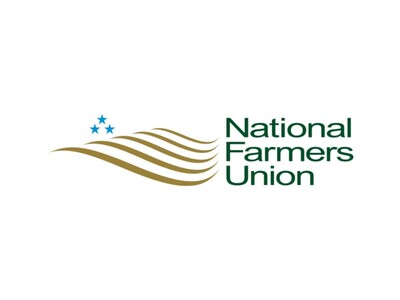USDA Wraps Up New organic Livestock Standards
The U.S. organic industry is poised to be under a new regulatory framework that will govern new animal welfare standards including outdoor access, living conditions, transportation and slaughter practices.USDA first started promulgating rulemaking sought by the organic industry nearly 20 years ago, but various roadblocks and court challenges delayed accomplishing what Secretary of Agriculture Tom Vilsack called the “most significant update in organic regulations in over 30 years” in the new Organic Livestock and Poultry Standards (OLPS) language.
Nate Powell-Palm, an organic egg and grass-fed beef producer based in Montana, said on a USDA-hosted call Wednesday that this rule offers a clear standard for those in the organic industry to verify to consumers the additional actions organic producers take to receive USDA’s organic seal.
The organic industry represents a growing segment desired by consumers, with organic egg sales tripling over the last decade and overall organic sales surpassing $60 billion last year. Recent research commissioned by the Organic Trade Association shows that 75% of Americans are concerned about the treatment of animals by the meat and dairy industry.
USDA's new regulations will require that all certified organic operations must give their animals “access to the outdoors, shade, shelter, exercise areas, fresh air, clean water for drinking, and direct sunlight,” OTA said, but organic producers have argued those requirements weren’t being met by some players in the industry.
“This rule makes organics the gold standard for animal care,” Powell-Palm said on the USDA call.
In a separate interview with Agri-Pulse, Powell-Palm said he believes this rule will help provide a level playing field for all organic producers to comply. “I think we can consider most of it a plateau, with a few little ridges here and there, and those ridges are what’s going to be smoothed out by this rule.”
Vilsack told reporters the rule focuses on six significant areas.
First, it establishes minimum outdoor space and access requirements for livestock. Outdoor areas must be at least 75% soil, and vegetative cover is required.
The outdoor access component — and the apparent lack of USDA enforcement — has been criticized by organic groups, which the OTA said resulted in a “few large poultry companies utilizing narrow, enclosed porches — usually with a cement floor — instead of true outdoor access.” OTA said this rule’s most important component is the clarification that “screened-in, enclosed porches do not qualify as sufficient outdoor space for organic chickens.”
Powell-Palm does not believe the proposed changes will require variations to his farm but may impact those farms transitioning to organic or larger-scale organic operations. Many facilities may require an additional 10-30 acres of outdoor access around a barn to meet the outdoor space requirements, he said.
The rule also carries forward indoor and outdoor living condition requirements, including sufficient space for animals to move freely and allow for natural behaviors such as rooting for pigs and scratching for chickens.
“All organic poultry producers will need to provide real access to the outdoors, and that is what certified organic represents. The new standards are a definite improvement over the current reality which has created competitive harm among farmers and not met consumers expectations for what it means to be an organic egg from an organic chicken,” said Adam Warthesen, senior director of government and industry affairs for organic dairy cooperative Organic Valley.
USDA set specific density levels for poultry that aligns with advisory board recommendations, third-party animal welfare standards and public comments offered by organic stakeholders.
Vilsack said the rule “focuses, as it should, on preventative health care practices” that will ensure the health of livestock and poultry focused on nutrition and parasite prevention programs.
It also limits physical alterations to animals, and the rule specifies that alterations must be made at a young age that minimizes the animal’s pain and stress. Humane euthanasia is also only allowed as a last resort.
Finally, the rule ensures that organic livestock and poultry are transported, handled and slaughtered appropriately, and transportation does not exceed eight hours.
Vilsack finalized similar rulemaking — the Organic Livestock and Poultry Practices — during the Obama administration, but the changes were withdrawn in 2017 by then-Secretary of Agriculture Sonny Perdue, citing concerns over the economic analysis.
Jennifer Tucker, deputy administrator of the Agricultural Marketing Service (AMS) National Organic Program, said the agency looked at the previous economic analysis and updated it in the rule, expected to be published soon in the Federal Register.
AMS anticipates this rule will produce an annualized net benefit ranging from $59.1 million to $78.1 million. Vilsack said benefits for egg production range from $32.4 million to $47.9 million and broiler chickens from $26.6 million to $30.1 million.
Establishing feasible transition periods was the most significant change made to the rule based on the 40,000 comments received on the initial proposal as well as interaction with the organic industry, Vilsack said. He said some comments sought a long transition period, such as 15 years, while others sought a shorter time. Vilsack believes the five-year transition will provide growers who need to make changes “sufficient time to recoup those investments.”
The rule becomes effective 60 days after publication in the Federal Register. Operations must comply with the rule within one year, except poultry operations have four additional years to comply with the expanded outdoor space requirements, indoor and outdoor stocking density for broilers and exit area requirements for layers and broilers.
On the USDA call, Rep. Chellie Pingree, D-Maine, praised the work by USDA to get the rule across the finish line. “This is of great economic importance to our farmers, not only in Maine, but across the country. And making this level of progress gives so much more certainty in a field that is already stressed in so many ways,” she said.
Source: Agri-Pulse

















